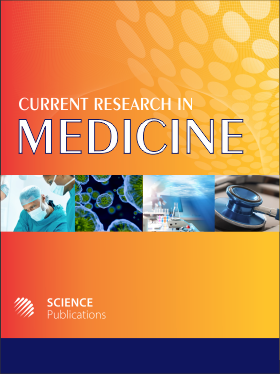AMYOTROPHIC LATERAL SCLEROSIS: HOW TO UNDERSTAND SUCH DIVERSE AND SO ENTANGLED PHYSIOPATHOLOGY?
- 1 Hospital Geral de Nova Iguaçu-HGNI, Brazil
- 2 Federal Fluminense University, Brazil
- 3 Piaui Federal University, Brazil
Editorial
When in 1865, JeanMartin Charcotreported patients with progressive muscular atrophysuperimposedwith spasticity of inexorable evolution as result of combinedlesions of the anterior horn and lateral column of the spinal cord, hecertainly inaugurated an attempt on the comprehension of one of the mostcomplexes neurological clinical conditions, which until today persists withimmense voids on their comprehension, regardless of the enormous advancesachieved.
Astime went by, we ameliorated the understanding of several clinical forms of theAmyotrophic Lateral Sclerosis (ALS) and its respective natural history,although being far away from a biologic marker that could identify us with apre-clinic phase, when there are losses of motor neuron before the awakening ofthe complaints.
Now we have better knowledge in ALS epidemiology, but with clear enigmasthat still do need a lot more dedication. Similar distribution stands up in allcountries of the World, at an average rate of 2 in 100.000 people, with a few exceptions as the curious incidence of anumber of cases diagnosed in the decade of the 90’s, at the Kii Peninsula of Japan, as well as in Micronesia and Indonesia. Amongst the Chamorros, inthe Guam Islands and at the Kii Peninsula, the incidence reached 100cases/100.000 population, with a phenotypic picture of the ALS, parkinsonismand a frontotemporal dementia. In Guam it was raised the probability ofexposition of the population to the BMAA (b-methylamine-l-alanine), aneurotoxic present on the local diet, thus produced by cyanobacteria.
The epidemiology also demonstrates that the majority of the cases occursporadically with 5 to 10% of the cases showing familial historicity. The mostfound pattern is autosome dominant, with high penetration, although it may bepossible to find a recessive autosome pattern. In 1993 a mutation of thesuperoxide dismutase copper/zinc enzyme(SOD1) was identified in the chromosome 21, gene locus 21q22.21, with theincumbency to block the accumulation of free radicals within the cells. Thesearch for the ALS familial gene responsible for the decease started then. Atthis0 moment, more than a hundred of the SOD1gene mutations are identified,besides the finding of other genes.
The genetic studies brought out the development of the ALS animal model (transgenicmouse model bioassay of ALS), therefore allowing the comprehension of thepathologic mechanisms linked to a mutant SOD1.
The pathology initially defined as progressive loss motoneurons,astrogliosis; proliferation of microglia and inclusions in cell bodies inreminiscent neurons and astrocytes, has been largely enriched with descriptionsof several pathologic processes.
There are other risk factors which are implicated on thedevelopment of the ALS, such as sports of high performance, smoking, traumas,living in country regions, exposition to electric traumas, but in need of amore consistent analysis. The neuro-epidemiologic studies must answer these andother inquiring of the population studied.
As the time went by, there were descriptions of clinicforms deferring from the initially described classic one, as well as pathologicdeepening studies, with the demonstration of the motor neurons loss of thecerebral cortex, brainstem and spinalcord; gliosis, microglial proliferation and intracellular inclusions in thereminiscent neurons and glia cells, expanding possibilities of severalpathologic processes on the neuronal neighborhood, showing that the deathmechanisms of the motor neurons are complex and multifactorial.
Until our days, severalmechanisms are involved with the motor neuron death, such as the excitoxicity-orientedby the glutamatergic disturbance receptors that control the calciumintracellular influx; metabolic alterations-that originate from the DNA/RNAmetabolism and from the formation process of the intracellular aggregation;microglial activation with the liberation of trophic and neurotoxic factors;mitochondrial dysfunctions; neurofilamentdysfunctions and neurotubules that form the cytoskeleton and its proteins,responsible not only for the anterograde but also for the retrograde whichguarantee the functionality of the neuron; the aberrant processing of the RNAand the production of new proteins, as well as at the splicing of otherproteins, such as the TDP-43, codified by the gene TARDBP, seen at thechromosome 1, found in pathologic deposits at motor neurons, besides theFUS/TLS, senataxin, peripherin e angiogenin.
Oneof the most remarkable characteristics of the sporadic ALS is the presence ofinclusions in motoneuronsand glial cells with TDP-43 and FUS/TSL deposits. Itis not very clear yet if such protein aggregation is directly toxic for thecells or if it is a defense mechanism of reduction of the toxicity of theaggregated protein.
It has been recentlysaid that the SOD1 protein of the rats may form proteic aggregations withincultures and to be expanded into other motor neurons of the culture, similarlyto the infecting protein PRION. This prion-like transmission could wellexplain the expansion of the ALS pathology into the neighbor cells.
In spite of this significantamount of information on the ALS and the therapeutic tests taken with numerousdrugs, the Food and Drug Administration (FDA) released the riluzole in 1996 asthe first medicine for the specific treatmentof the ALS. Its function is considered an anti-glutamatergic agent, but itsmechanism of action is yet to be certified and, therefore, several agents withanti-glutamatergicactivity (lamotrigine, topiramate, gabapentin e talampanel)did not reveal beneficial clinic effects.
The cellular therapywith stem cells, surrounded by a great technical challenge, is presented with aperspective of neuro-regeneration as well as of neuro-protection of motoneuronsin ALS.
The care with patientspresenting ALS has become enormouslycomplex. All patients should have at their disposition a healthmultidisciplinary specialized teamwork, with an approach based on common senseupon the specific problems of each one of them. The adequate treatment for eachpatient is fundamental to guarantee his/her comfort, to better his/her capacityto perform activities and to improve the quality of his/her daily life.
And, last but notleast, we look forward to a not very distant future that the ALS patients willbe grouped under clinic subtypes determined by their genetic mutations andtheir pathologic specific processes, expecting that they will receive theconsequent specific treatment. Meanwhile, we believe that we should offer allthe therapeutic measures developed scientifically for each one of thepathologic processes already identified. Before such specific treatments happenfor the specific cause responsible for such specific clinic condition, arational polytherapymust be offered to the ALS patients. Against the waitingtime, hope!
DOI: https://doi.org/10.3844/amjsp.2014.37.38

- 5,812 Views
- 3,367 Downloads
- 0 Citations
